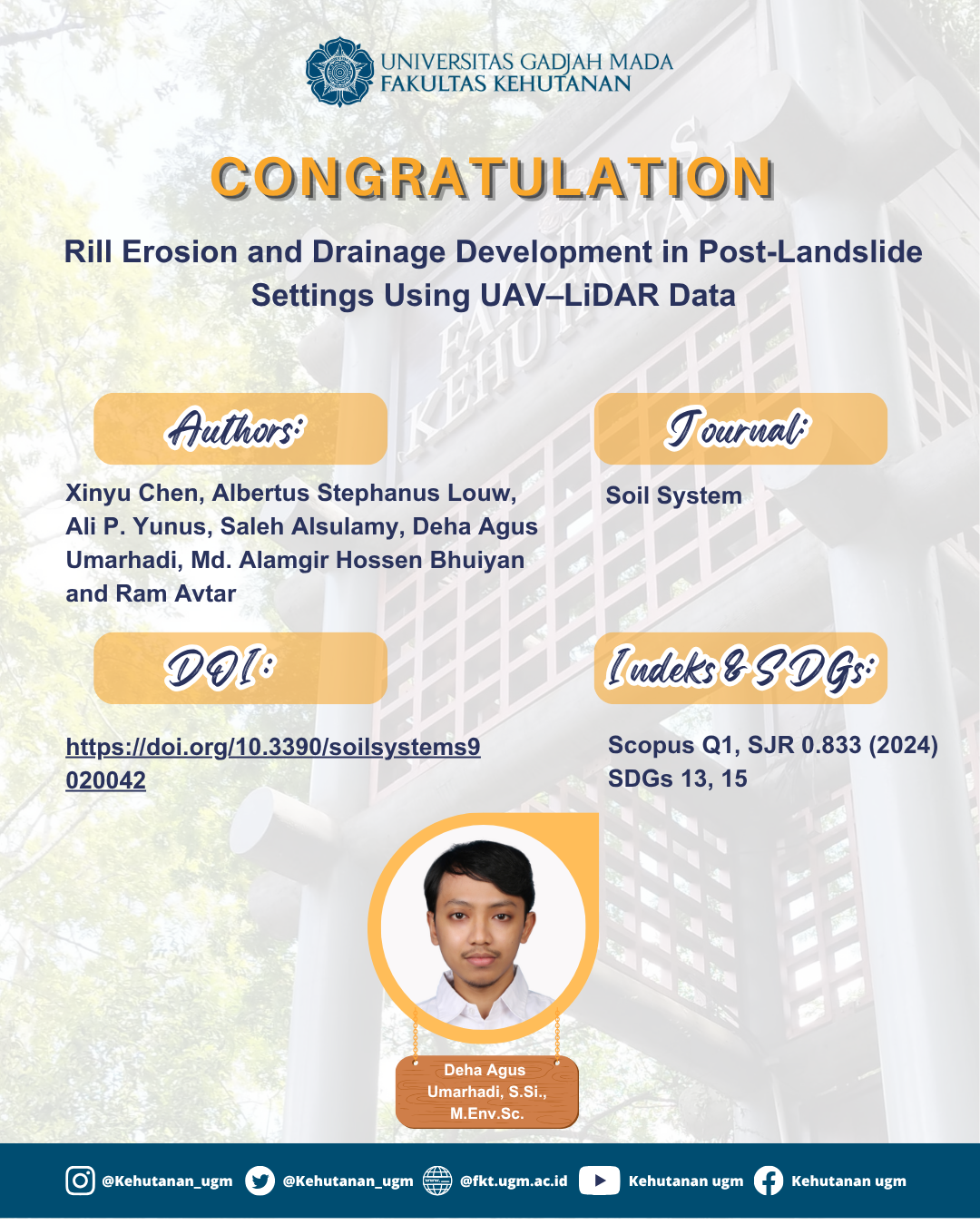
Abstract
Accurate microtopography data are an important input for characterizing small-scale rill erosion and its progression following disturbances. UAV–LiDAR systems are increasingly accessible and have successfully been used to measure microtopography data for several applications. Yet, the use of UAV–LiDAR systems for rill erosion studies in post-landslide landscapes have not been well investigated. Therefore, the purpose of this study was to implement and evaluate a UAV–LiDAR-based workflow to capture the microtopography of a post-landslide landscape, and by doing so, to help to determine best practices for UAV–LiDAR-based rill analysis. A commercial UAV–LiDAR system was used to map three post-landslide slopes and generate digital elevation models with a 1 cm-per-pixel ground resolution. Using data captured over multiple years, temporal rill development was assessed by comparing rill cross-sections and calculating changes to rill density and erosion volume. A flow-accumulation algorithm was adopted to automatically extract the rill network. We found that a flow accumulation algorithm with a threshold value of 5000 detected the rill network with overall accuracies of >88% and F1-scores of >93%. Vertical cross-sections of individual rills revealed an increase in the depth and width of rills over a one-year period. This study demonstrates that a commercial UAV–LiDAR system can effectively describe microtopography in a post-landslide landscape and facilitate analysis of small-scale rill characteristics and the progression of rill erosion.
SDGs:
SDG 13: Climate Action
SDG 15: Life on Land
Link Dokumen:
Download
